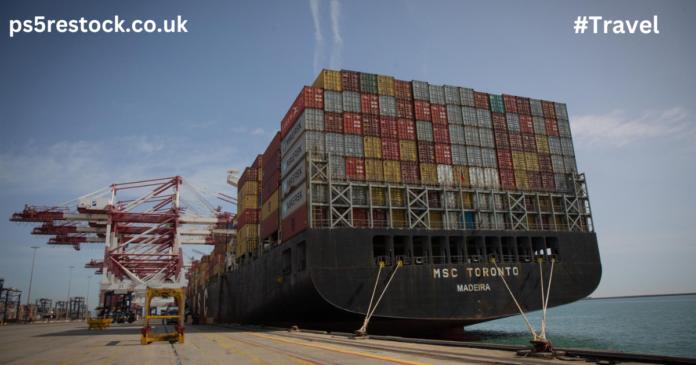Introduction: Overview of Spain’s economic growth
Spain is on a roll, as the latest reports reveal that the country’s economy is bouncing back with impressive GDP growth numbers. After navigating through turbulent times, the second quarter shows signs of resilience and optimism. With figures indicating an increase in economic activity, many are eager to understand what has driven this surge. As Spain regains its footing, the implications for businesses and individuals alike are boundless. Let’s dive https://finanzasdomesticas.com/espana-vuelve-a-crecer-pib-28-segundo-trimestre positions Spain within the broader European landscape.
Factors contributing to Spain’s GDP growth in the second quarter
Spain’s GDP growth in the second quarter can be attributed to several key factors. A significant boost came from robust consumer spending. As restrictions eased, people returned to shops, restaurants, and entertainment venues, invigorating the economy.
Tourism also played a vital role. With international travel picking up again, Spain welcomed millions of visitors eager to explore its rich culture and stunning landscapes. This influx not only benefited hotels and restaurants but also stimulated local businesses.
Additionally, increased exports contributed positively. Spanish industries ramped up production to meet rising global demand for goods like automobiles and agricultural products.
Investment in infrastructure projects further fueled economic activity. Government initiatives aimed at modernizing transport networks have created jobs while enhancing productivity across sectors.
These combined elements painted a hopeful picture for Spain’s economic trajectory during this period.
Comparison to other European countries
Spain’s economic growth stands out in the European landscape. While many countries are grappling with sluggish recovery, Spain’s GDP increase of 2.8% in the second quarter is noteworthy.
Germany and France have shown modest growth figures, often struggling to regain pre-pandemic momentum. In contrast, Spain’s vibrant tourism sector has significantly contributed to its robust performance.
Italy also lags behind, facing hurdles that impact its overall economic health. The differences highlight how diverse recovery strategies can lead to varied outcomes across Europe.
Spain benefits from strong consumer spending and a surge in international visitors. This influx contrasts sharply with nations still battling lower demand levels.
Such comparisons underscore not only Spain’s resilience but also the importance of effective government policies tailored for significant sectors like travel and hospitality.
Impact on employment and consumer spending
Spain’s recent GDP growth has sparked a positive ripple effect in the labor market. As businesses regain confidence, hiring rates are on the rise. This trend brings renewed optimism for job seekers across various sectors.
With employment opportunities increasing, consumer spending is also showing signs of recovery. Families feel more secure about their finances and are beginning to spend again on both essentials and discretionary items.
Retailers have reported an uptick in sales, which indicates a shift towards normalcy in consumption patterns. The hospitality sector, particularly hit during the pandemic, is bouncing back with more people dining out and traveling domestically.
This surge in economic activity not only enhances individual livelihoods but also helps local economies thrive. With increased spending power comes greater demand for goods and services, creating a cycle that supports further growth within Spain’s economy.
Potential challenges and risks for future growth
Spain’s economic growth is promising, but it faces several hurdles ahead. One significant challenge is inflation, which could erode consumer purchasing power. Rising prices might lead to reduced spending and lower overall demand.
Another risk comes from global economic uncertainties. Changes in trade relations or geopolitical tensions can dampen investment confidence. This unpredictability makes businesses cautious about expansion plans.
Additionally, labor market issues pose a threat. Although employment has improved, youth unemployment remains high. Addressing this gap is crucial for sustainable development.
The potential impact of climate change cannot be ignored. As Spain grapples with environmental challenges, shifting toward a greener economy will require substantial investments and adjustments in various sectors. Each of these factors plays a vital role in shaping Spain’s economic trajectory moving forward.
Government policies and initiatives supporting economic recovery
The Spanish government has implemented several policies aimed at fostering economic recovery. These initiatives are designed to stimulate growth and bolster the resilience of key sectors.
One notable effort is the support for small and medium-sized enterprises (SMEs). Financial aid programs provide much-needed liquidity, helping them navigate post-pandemic challenges.
Investment in renewable energy also plays a critical role. The government’s commitment to sustainability not only addresses environmental goals but creates jobs in emerging industries.
Additionally, infrastructure projects receive significant funding. Upgrading transportation networks and public services enhances efficiency while generating employment opportunities across various regions.
Social welfare measures remain crucial as well. Enhanced unemployment benefits and targeted assistance help vulnerable populations regain stability during this transition period.
Together, these strategies aim to create a robust framework for sustained growth, ensuring that Spain’s economy emerges stronger from recent upheavals.
Conclusion: Future outlook for Spain’s economy
Looking ahead, Spain’s economy shows promising signs of resilience and growth. The recent GDP increase reflects a recovery that many hoped for after the disruptions faced in previous years. With ongoing government initiatives aimed at boosting investment and consumer confidence, there is potential for sustained economic momentum.
However, challenges remain on the horizon. Global economic uncertainties, inflationary pressures, and trimestre shifts in market dynamics could impact future growth rates. It’s essential for policymakers to navigate these risks carefully while fostering an environment conducive to innovation and job creation.
As Spain continues its trajectory towards recovery, close monitoring of both domestic policies and international trends will be crucial. If the current positive indicators are maintained https://finanzasdomesticas.com/espana-vuelve-a-crecer-pib-28-segundo-trimestre may very well solidify its position as a leading economy within Europe once again.
